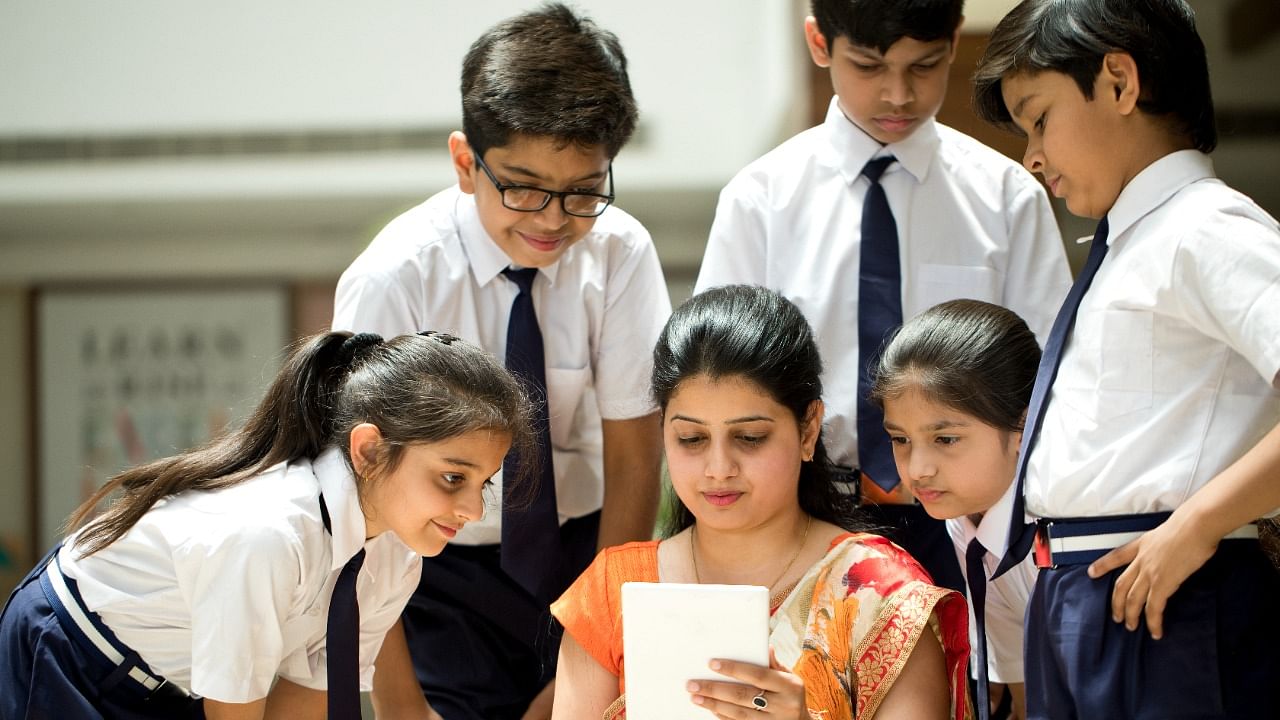
The Government of India celebrates September 5 as Teachers’ Day. Is this a homage to the thousands of teachers in the country, or a reminder to itself that it has failed them miserably? And failed millions of children, too, in the process.
In which case, the government would do well to admit that its much-touted new education policy – framed at great expense and released with much fanfare – is nothing but a sham. Like many other similar policies adopted by many other governments, this one, too, will become an empty showpiece unless its authors admit its shortcomings and reform it suitably.
When more than 92,000 elementary schools in the country are still functioning with no teachers, and many more secondary schools have teachers who are not qualified or trained, where and how do these reforms begin? It is obvious that the first step towards correcting such deficiencies is to strengthen teacher training programmes. We need to launch a massive drive in this regard at all levels.
We need to realise that a school can still exist without benches and desks; or without a blackboard and chalk. It can survive even without playgrounds and classrooms. But it cannot function without teachers. There are schools conducted under trees, in temples and in dilapidated hovels in many parts of rural India. They have survived and their pupils have walked miles on country trails or sailed in makeshift boats to reach them because there is a village teacher teaching in those schools. Even parent-teacher schools in cities where the public took over the management, with parents themselves donning the role of teachers, have done well in this respect. Today’s online classes, where parents supervise their children’s schooling, is a good example of education being imparted without even a school.
Did the policymakers care to visit India’s notorious single-teacher schools? While states like Rajasthan and Madhya Pradesh have the maximum number of such institutions, even progressive states like Karnataka have schools where one teacher “manages” elementary, lower primary and even upper primary classes in a single makeshift classroom.
At last count in 2019, there were nearly 5,000 single-teacher schools scattered in rural pockets of this state. Obviously, the teacher barely manages to maintain order in the classroom. Where is the question of teaching various subjects to children at three levels? How does a single teacher hold the attention of children of varying ages with varying degrees of mental and emotional maturity?
If the policymakers visited such schools before framing their policies, a completely different picture would have emerged. What looks grand on paper or what is discussed, debated and decided in high-level meetings or glittering assemblies is a far, far cry from that makeshift shed in the country’s rural areas where a single, helpless, unqualified teacher struggles to maintain a scholastic atmosphere in a “class” of kids of varying ages with no books, or teaching aids or even basic necessities like drinking water. Teachers’ Day is a good day to remember and salute these abandoned gurus.
It may be worthwhile in this context to reconsider some of the relevant reforms suggested by earlier commissions. The most significant among them were the recommendations made by the National Commission for Teachers in 1986. An outstanding recommendation was the one linking salary to performance. This, along with merit-based selection, promised a better cadre of teachers in schools. It also offered opportunities for promotions and upward mobility in their careers. If evaluated and found suitable, teachers would be eligible for promotion to the next grade. Such performance-based promotion was meant to put an end to the frustration and discontent of really qualified teachers languishing for years with no recognition of their work.
The Commission also advised the government to replace the varying pay scales for teachers in different states by a single running scale. And, in order to implement this mechanism, it also suggested an All-India test at the entry level for teachers. Only those who obtain the prescribed grades would qualify to be appointed as teachers. Their efficiency level was also to be tested after five years, and thereafter every 10 years.
Teaching is a craft that must be learnt and polished from time to time for improved results. Teachers can get rusty with the passage of time, unless they keep in touch with the latest methodologies and teaching techniques. These recommendations were meant to put an end to the widespread frustration and discontent among those teachers who were qualified for the job as opposed to the thousands of untrained ones who were absorbed into the system in a haphazard way. If these reforms are put in place today, along with a code of conduct for teachers, teaching standards will certainly improve. Much depends, however, on the method of implementation.
For example, who is to judge a teacher’s performance in class? The head of the institution? Her colleagues? Or, worse, a government inspector? The answer is obvious. A teacher’s pupils are the best judges of her capabilities. Their performance in tests and examinations point to the kind of coaching they received in class. Student evaluation of teachers is an integral part of foreign universities. In India, student performance in tests and exams should be evaluated carefully towards this end.
Again, peer evaluation is highly prized in other countries, although it may not work in this milieu. Even merit-based selection of teachers will invite opposition from many quarters, which is why the Commission’s recommendations could not be properly implemented. However commendable, they have been difficult to implement, especially in government or government-aided private schools.
If, at least, it is generally agreed to establish a national system of school education with high and uniform standards of excellence in its teachers, that should be the first step in recognising the importance of good teaching. Teachers of merit and competence alone can generate meritorious students. Can there be two opinions on that?